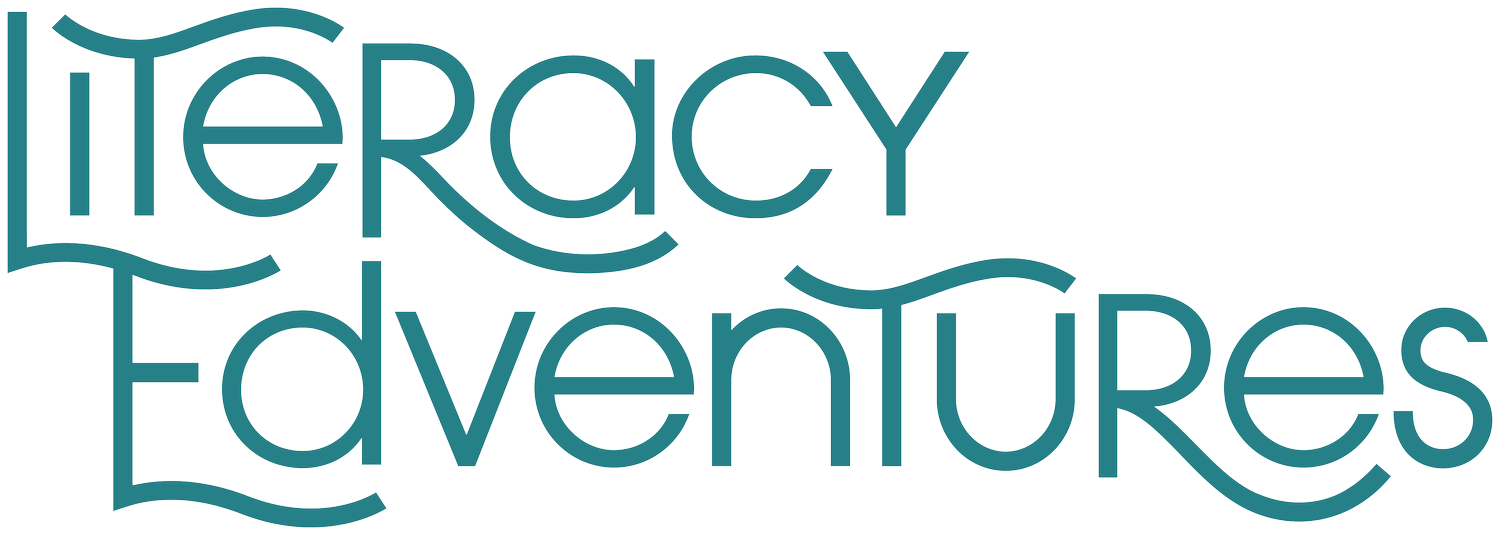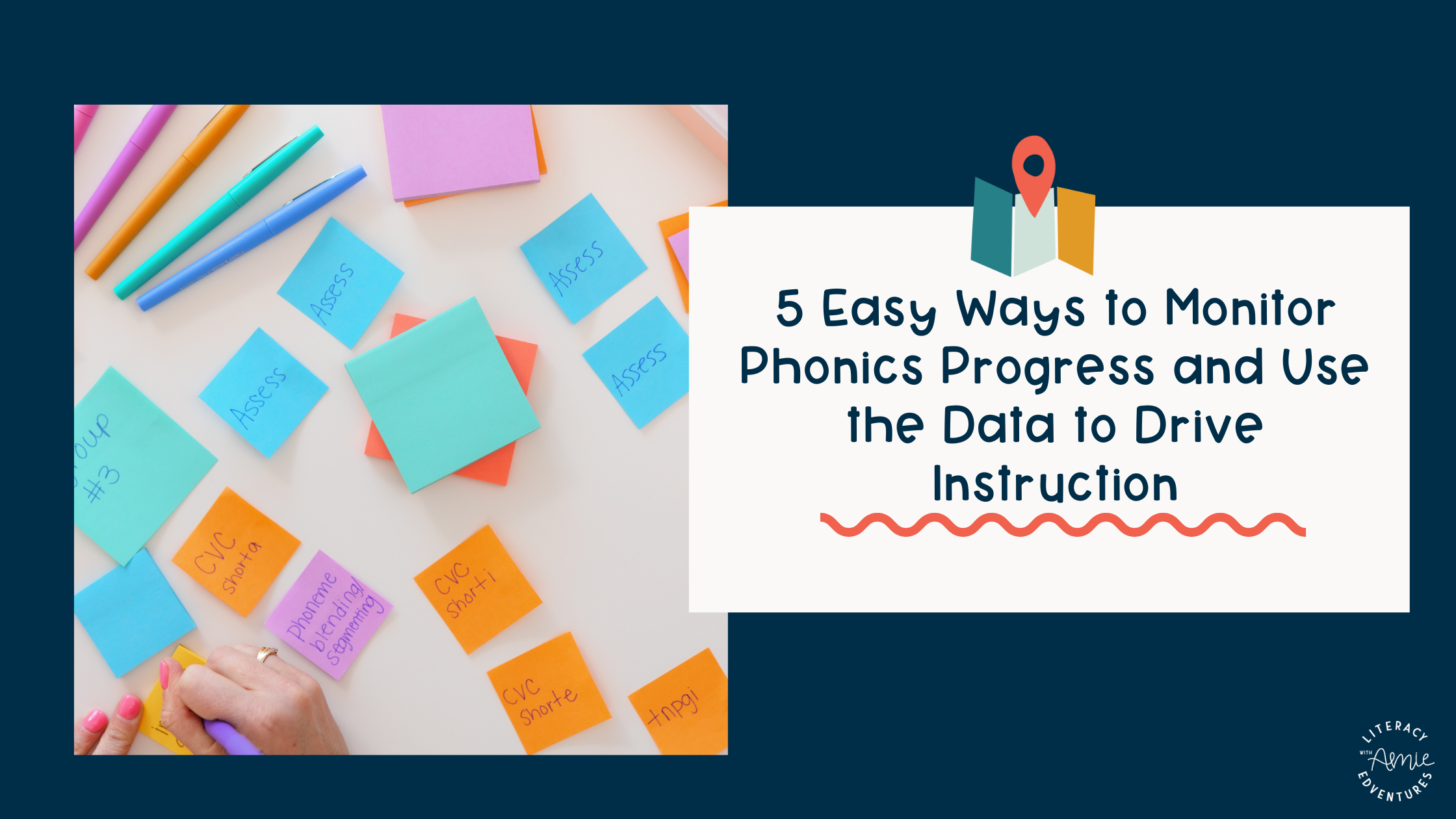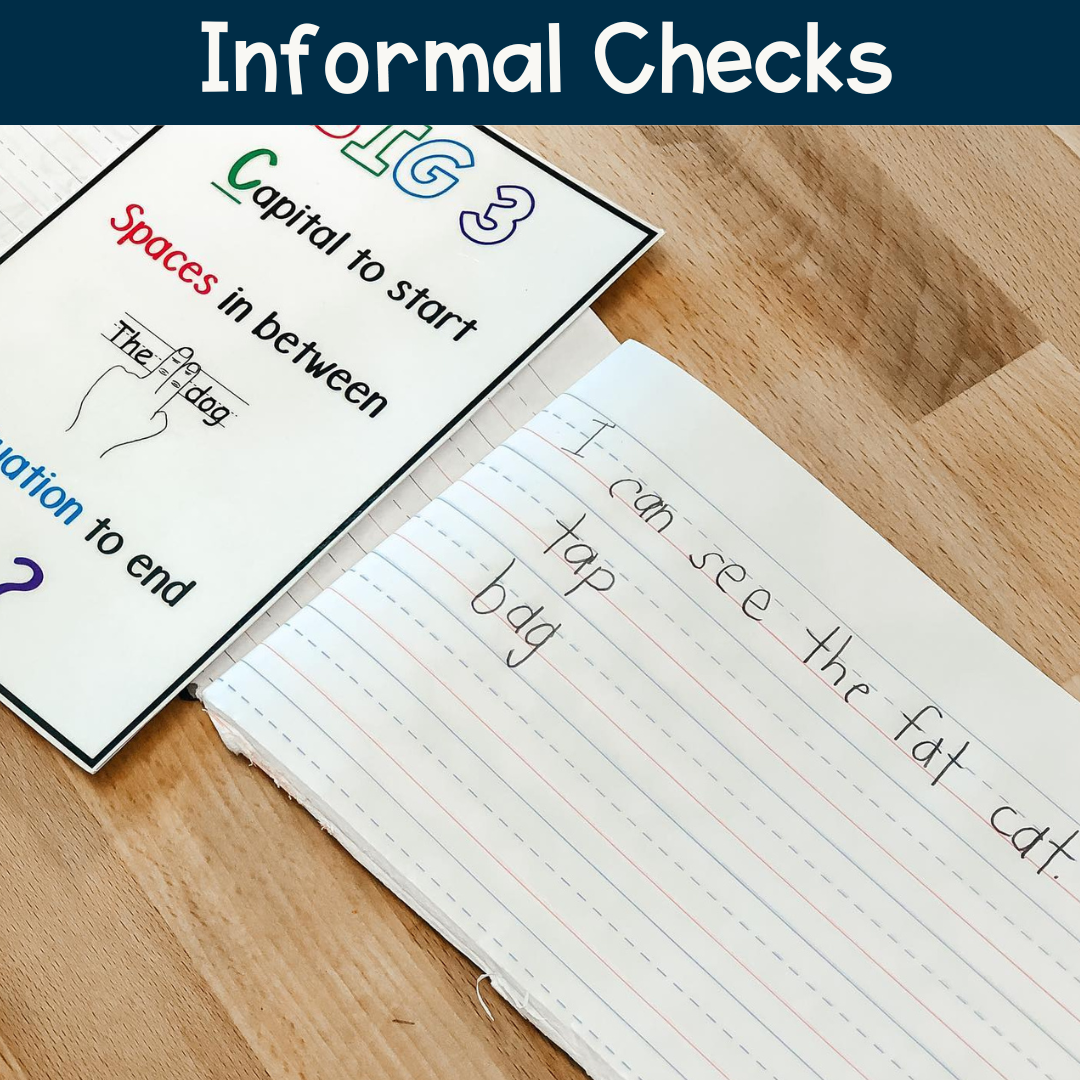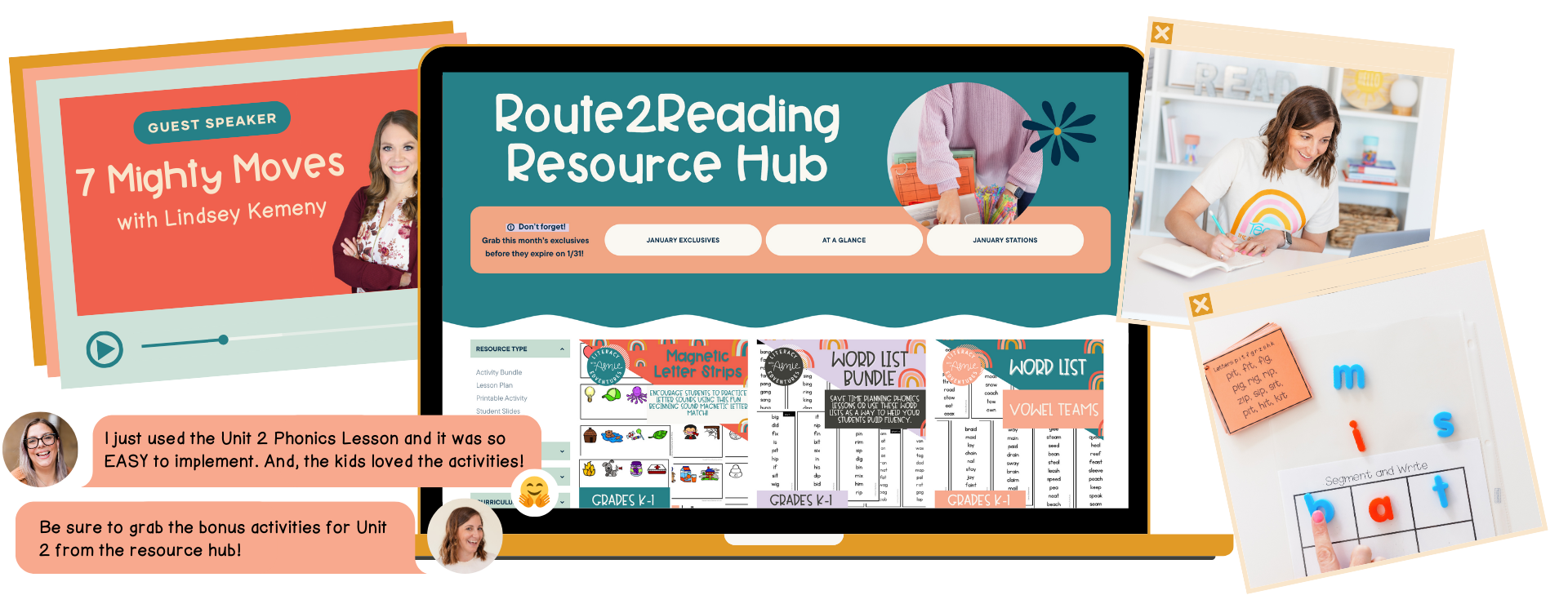5 Easy Ways to Monitor Phonics Progress (and Use the Data to Drive Instruction)
Progress monitoring doesn’t have to mean more testing or more paperwork. In fact, when it's simple and consistent, it becomes one of the most powerful tools in your literacy block.
Whether you're using UFLI, Foundations to Fluency, or your own structured phonics routines, these five strategies will help you track what students know, spot who needs reteaching, and take the stress out of small group planning.
And if you want help organizing it all, I’ve got a toolkit that makes progress monitoring simple (details below).
1. Weekly Spelling Checks with Purpose
Skip the memorized word lists. Instead, use short, targeted spelling checks to measure whether students can apply taught phonics skills in writing.
Try this each week:
3–5 decodable words that match your current phonics skill
1–2 review words from previous weeks
A dictated sentence using only taught phonics patterns and heart words
This quick check gives you insight into decoding and encoding—and shows exactly who’s ready to move on or who needs reinforcement.
2. Use a Simple Skill Tracker
A progress monitoring plan is only helpful if you can keep track of it.
Use a simple skill tracker—paper or digital—to note:
Which sound-spelling patterns students have mastered
Which students are confusing short vowels, digraphs, or blends
What needs to be retaught in your small groups
A quick check-in with your tracker after weekly spelling checks or small group work makes planning fast and data-driven.
2. Explicit Teaching: Make It Stick
Goal: Teach new skills directly, clearly, and systematically.
Time: 5–10 minutes
What to include:
Direct instruction of the target skill
I Do, We Do, You Do modeling
Word Mapping
Word Chaining
Dictation practice
Why it matters: Reading and spelling are reciprocal. Explicit teaching ensures students are hearing, mapping, and applying each phoneme-grapheme correspondence in a multisensory way.
Tips:
Choose 1–2 routines per day to keep it focused
Make every activity connect decoding AND encoding
Prep materials once: word chains, mapping sheets, dictation helpers
4. Listen to Students Read—Just a Little
Use quick temperature checks to ensure students are applying the skill in context. A few minutes listening to students read decodable words or sentences can tell you everything you need to know.
While they read, notice:
Are they reading sound by sound—or blending smoothly?
Are they making errors? If so, what kind?
Which sounds or patterns are tripping them up?
This quick check-in reveals which students are transferring phonics skills to real reading and who still needs decoding support.
5. Reteach with Intention After You Assess
The real power of progress monitoring? What you do next.
After each spelling check, read-aloud, or observation, ask:
Who needs a quick reteach in small group?
Can I adjust tomorrow’s warm-up or mini-lesson?
Would extra word chaining or targeted practice help?
The goal isn’t to create a new lesson—it’s to revisit the right skill, with the right students, in just a few minutes. When you do that, every student moves forward.
Want a Done-for-You Toolkit?
If you’re ready to take the guesswork out of progress monitoring, I’ve got you covered.
The Progress Monitoring Toolkit includes:
Editable skill trackers
Weekly dictation templates
Small group planning guides
Quick data collection forms
Print-and-go checklists
Want your own toolkit?
I understand that buying each resource separately can quickly ADD UP. As a teacher, I know we have to make the money we spend COUNT! But don’t worry—there’s a more straightforward, more efficient solution with Route2Reading, my K-2 membership designed to streamline planning, prepping, and teaching small group instruction.
Rather than spending your weekends glued to your computer, searching for Science of Reading-aligned phonemic awareness, phonics lessons, and decodable texts for your small groups, you can log in to Route2Reading.
Choose the focus skill for the week, download the detailed, step-by-step lesson plans and activities, and your small group instruction is ready to go in just a few clicks. Planning has never been easier!
I hope that you found today’s post helpful. Whether you choose to join the membership or not, I am always here to help you in any way that I can. Leave your questions below or send me an email Amie@literacyedventures.com








